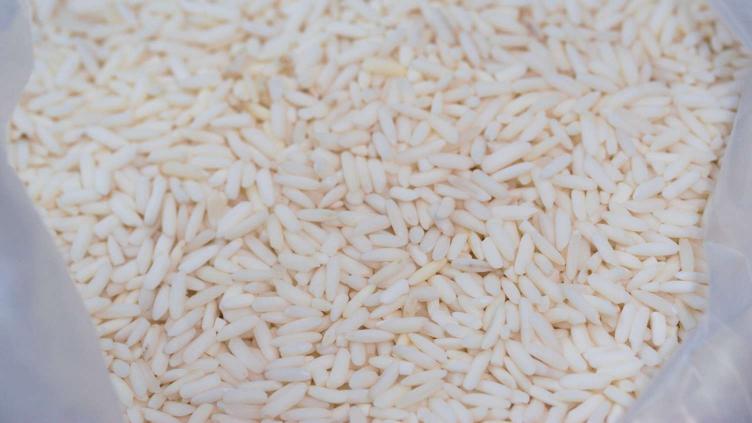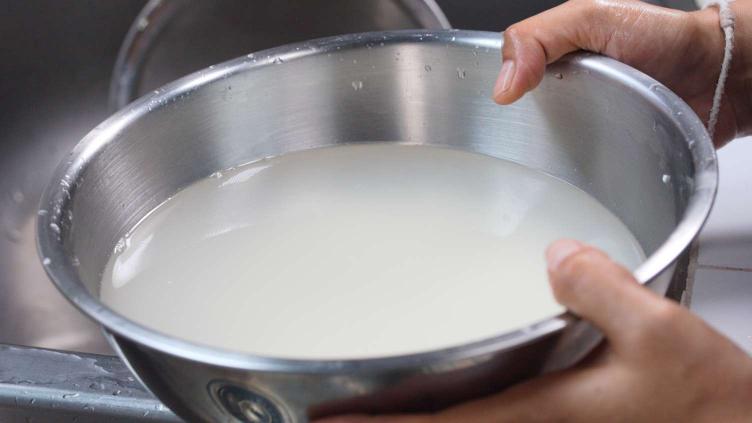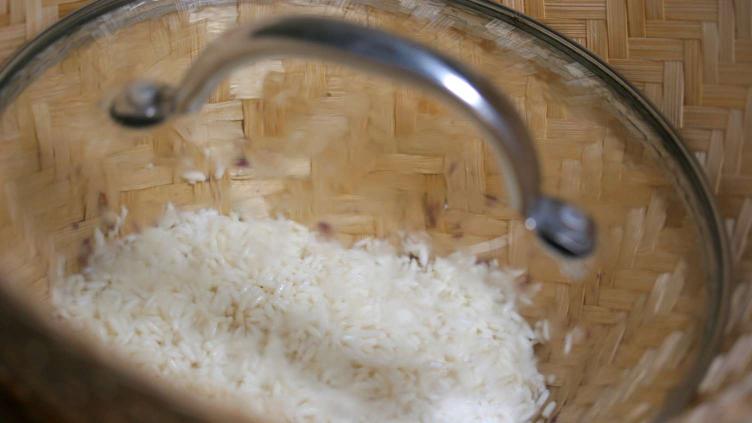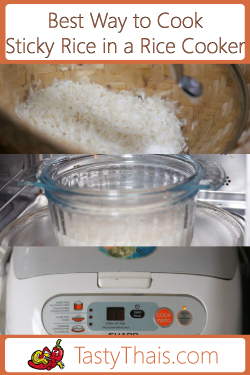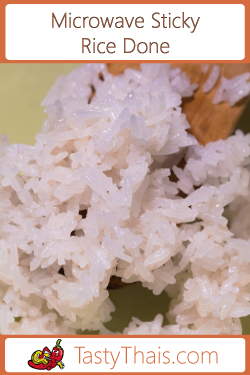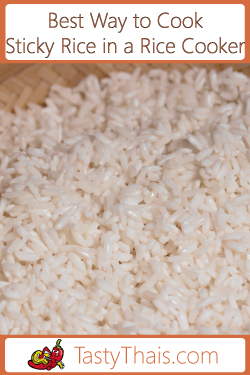If you haven’t yet checked out our comparison of cooking methods for sticky rice, then you might like to visit that article and then come back here. We found that cooking sticky rice in a bamboo steamer gave us the best results as well as being the traditional way. This is the best way to cook sticky rice on a stove.
Sticky rice is used in such a lot of recipes in Thailand that you cannot walk down the road without seeing someone either selling it to eat with barbecued pork or chicken, roasting it on the BBQ for an instant buttery snack, molding it into little Thai desserts, wrapping it in leaves for steaming or sticking in bamboo for cooking on the BBQ.
Links disclosure: Some links on this page go to affiliate partners where, without cost to you, we may receive a commission if you make a purchase.
It is a super versatile and very delicious form of rice that perfectly absorbs the spicy sauces that accompany dishes like Moo Yang or Barbecued Pork Sticks as well as delicious sweet mango when soaked in coconut sauce and served together in paradise-like harmony.
The thing is you have to cook it first so if you have time and are all prepared then cook it this way. If you want to explore cooking over a saucepan or with an electric steamer then check out our later post.
Equipment Needed to Cook with a Bamboo Steamer
It will come as no surprise that you need a bamboo steamer.
There are a few types but the best type is undoubtedly the traditional version that has extended sides that look a bit like ears. The reason this type is the best is that you can grab hold of those ears to flip the rice when the time comes and do so without steaming your fingers!
To satisfy all those requirements you are best just buying the pot and steamer that are made for each other. Unlike most marriages, these two tools go very well together. The alternative is rummaging around testing pots that are too narrow for the steamer, too shallow so the rice gets all wet or cook unevenly.
Given the cost it is really better just to get the right stuff in the first place since it is not very expensive anyway. Check out the tools I use over at kit.com too!
We’re assuming here that you will be cooking this rice fairly often, which you will once you have tasted it!
The other thing you will need is a pot large enough and with a suitably sized opening to allow the bamboo steamer to fit and accommodate enough water for steaming. Your pot also needs to be tall enough to hold sufficient water without letting the bottom of the bamboo steamer to touch it. If it does the rice will all glob together as a lump in the bottom.
You’ll also need a large enough bowl to wash the starch off the rice before you start.
One optional thing is a bunch of pandanus leaves if you can get hold of some. It’s optional but totally worth it.
And water and rice and a flame of course!
Method for Traditionally Steaming Sticky Rice
Step 1 Washing and Soaking the Glutinous Rice
Get your large bowl and scoop out the quantity of rice you want to cook. 1 cup of dry rice is enough for 2-3 people if using it as a meal accompaniment.
Cover the rice with plenty of water and swish it around with your fingers to release the starch attached to the outside of the grains. The water will turn a milky color and after 30 seconds or so of swishing it is time to drain that off and replace with clean water.
You will need to repeat this process three or four times until the water is reasonably clear after swishing.
Then drain off the rice and rinse under a running tap for a few seconds before transferring to a bowl and covering with water – about 1 inch above the top of the rice is enough.
Leave the rice to stand at room temperature for at least 2 hours to soften. A little longer is fine but not too long as eventually, the rice will deteriorate, especially if you are using brown or black glutinous rice.
Step 2 Drain and Start Steaming
About 5 minutes before you are ready to cook the rice (just before the soaking time is up) fill your steaming pot about one third or so full with clean water. Drop-in a small bunch of pandanus leaves if you have available – they add a bit of aroma which gives a clean smell whilst cooking and augments the aroma from the rice cooking.
Put it on the stove to bring to a boil.
When the water is boiling already, drain off the rice from the water used to soak it in. Transfer the rice to your bamboo steamer and shake the rice down to the bottom so the rice is even across the top surface.
Put the rice steamer with the rice into the mouth of the steamer pot making sure that the water is well clear of the bottom of the steamer.
Cover the top of the rice with a saucepan lid or bamboo cover. Set a timer for 10 minutes.
Step 3 Steaming Part 1 and The Flip
When the timer goes off, remove the lid from the rice and grab the ears of the bamboo steamer, lifting it out of the boiling pot.
Press the bottom of the bamboo steamer against a flat surface, a clean worktop surface, for example, to loosen the rice in the bottom and then flip the rice so that which was on the top now sits at the bottom and vice verse. No vice in flipping my mum used to say!
Jiggle your bamboo steamer until the rice all settles together again and the grains loosely hug each other in the bottom.
Check the water in the steamer is enough for another 5 minutes. If not add a small amount of boiling water to top up. If you have the right sized pot then your boiling water should still be enough.
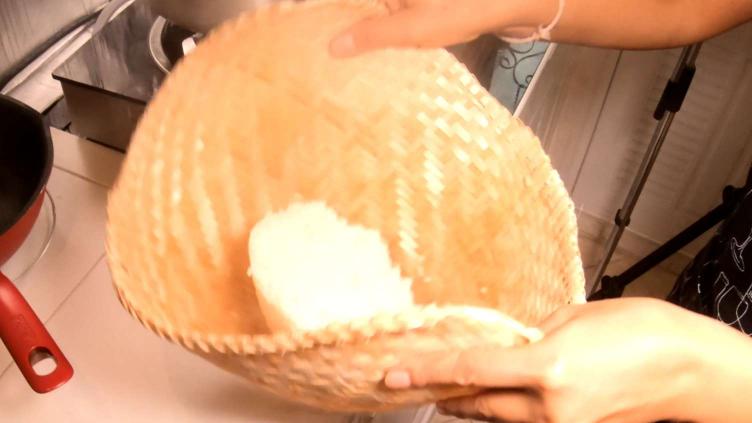
Step 4 Steaming Part 2
Replace the bamboo steamer on the boiling water pot and cover.
Set a timer for another 5 minutes.
Step 5 Finishing Up
When the timer goes off, remove the cover from the rice and use a fork to break a little rice away. Taste to ensure the rice is cooked – it should be sticky but have a little bite.
If you want it softer then you can steam a little longer but I don’t advise it because soft, wet sticky rice is just not so nice. You can use a rice cooker if you want that!
You can also see if the rice is cooked as it will look a little translucent and be a consistent color throughout.
Tip out the rice immediately onto a clean surface and spread it out whilst fluffing it to release the steam. Then gather together and transfer to a bowl for serving.
Sticky rice done to perfection!
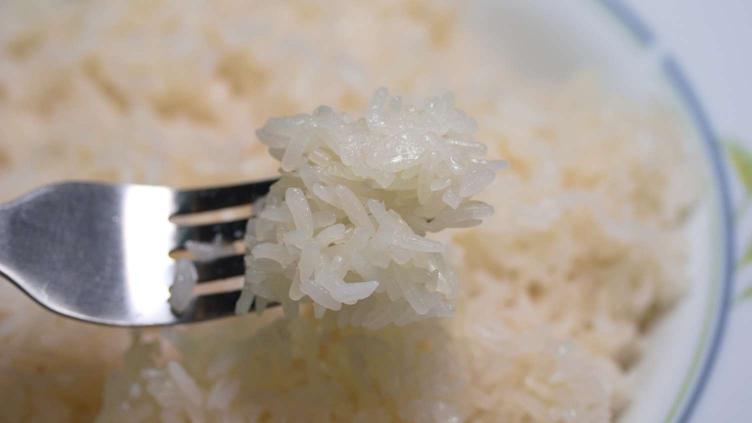
How to Cook Sticky Rice in a Bamboo Steamer (Traditional Thai Method)
Best Way to Cook Sticky Rice (Traditional Thai Method)
The Video showing this recipe being cooked is near the top of the page – A convenient Jump Link to the video is below the description under here.
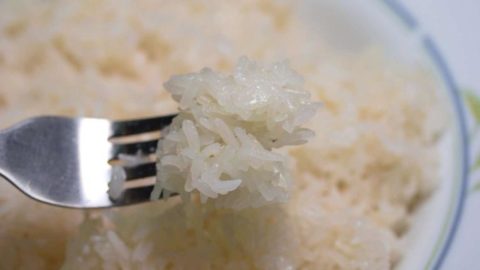
NOTE: Any In-recipe images can be toggled on and off with the camera icons next to the Instructions header.
Equipment
- Bamboo Rice Steamer & Pot
Ingredients
- 2 cups Glutinous Rice
- 1 bunch Pandanus Leaves adds aroma to steam
- 4 pints Fresh Water
Instructions
Washing the Sticky Rice
- Washing the rice is an imperative step. Place rice in a large bowl with enough water to cover very generously. Agitate with your fingers swirling the rice around and watch the water go cloudy.
- After about 30 seconds, drain the cloudy water slowly out of the bowl by gradually and slowly tilting it on edge so the water drains without the rice falling out.
- Repeat the washing process another three times using fresh water each time, stirring the rice around to wash it and draining out until the water is reasonably clear.
Soaking the Sticky Rice
- Place the washed sticky rice in a bowl and cover with water – enough to cover plus 1 inch.
- Leave to soak for 2 hours or 4-5 hours if using old crop glutinous rice. If you use unpolished rice such as black rice then do not soak for too long. Most rice bought in stores is new crop rice.
Steaming the Sticky Rice
- Put several pints of water in the steaming container to bring it to about 1/3rd to 2/5ths full. Water must not touch the underside of the bamboo steamer basket so be careful not to overfill. If the water touches the rice in the bottom of the basket then you will have a sticky ball of rice! Boil the water.
- Drain the water from the rice that has soaked and give it a quick rinse under running water – a sieve is handy for this step. Shake off the majority of the water from the rice.
- Use a damp cloth to wipe out the inside of the bamboo steamer. Tip in the rice and jiggle the bamboo steaming basket until the rice is fairly level in the bottom. Put the steaming basket on the pot of boiling water so it sits in the top and cover with a lid.
- Set a timer for 10 minutes.
Flipping the Rice
- When the timer rings, remove the lid covering the rice and grab the ears of the bamboo basket, taking care as it will be a little hot.
- Bang the basket gently or push down to loosen the rice in the bottom of the basket.
- Flip the rice by shaking the basket as you tilt it a little to flip the rice over so the top of the rice is now at the bottom and vice versa. Jiggle the basket to resit the rice in the bottom of the basket again.
- Check there is still enough water in the steaming pot for another 5 minutes of steaming and top up with hot water if necessary. Replace the bamboo steaming basket in the pot and cover with the lid again. Steam for a further 5 minutes – set your timer as you do not want to overcook the rice.
Finish & Serve
- When the timer signals the 5 minutes is up, remove the cover from the sticky rice. Taste test a few grains using a fork to pull them off, cool a little by blowing and check the rice is a little sticky and has a little bite when you eat it.
- Tip out the rice and spread it out to let the steam escape and to fluff up the rice a little. Then gather together into a bowl or bamboo rice baskets to serve.
Notes
Nutrition
Other Posts You Might Enjoy

I am a Thai mum and love cooking for my children. Over the years, I have taken my family recipes as well as ones borrowed from friends and adapted them to make them even tastier. I publish my authentic Thai Food Recipes here for all to enjoy around the world. When I get a chance to travel I publish information to help others visiting Thailand.
